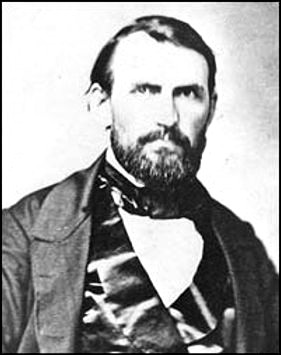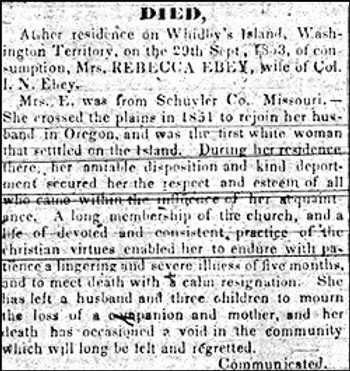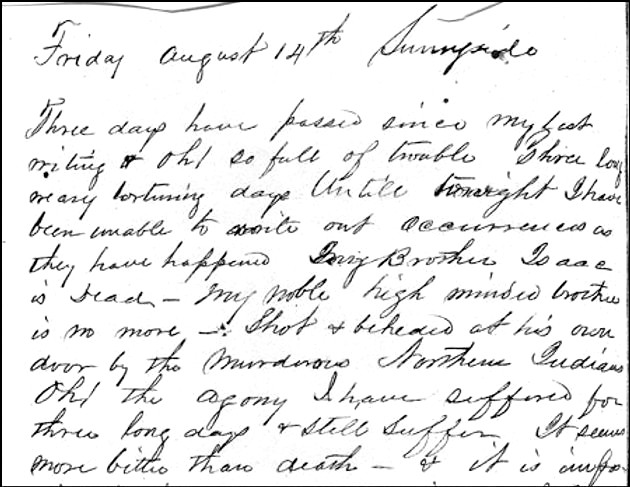The History of Sunnyside Cemetery
1850 - 1865


Private Collection
White settlers began migrating to Whidbey Island in 1850, drawn there by the Oregon Donation Land Claim that guaranteed them 320 acres of free property, or 640 acres if they were married. In September of that year, Isaac Ebey of Missouri became the first to file for land on Whidbey when he claimed the rich, fertile prairie that stretches below Sunnyside Cemetery to the east and today bears his name. Over the next four years, Ebey's wife, Rebecca, their sons, his parents and siblings, would cross the Oregon Trail to join him on the island. And as the history of Sunnyside Cemetery will show, the Ebey name figured prominently in its development.
As additional settlers joined Ebey on Whidbey, the need for burial space followed. The first recorded death was noted on May 22, 1853, when settlers discovered the body of Judah Church in the woods of his claim near Oak Harbor. A coroner's inquest was hastily convened at the site—official verdict, "unknown"—and the sixty-three-year-old native of Michigan was buried where he was found. Church's grave marked the beginning of many "farm burials" on Whidbey, an informal name given to internment on private land. When a death occurred in their family, settlers cordoned off a small plot of ground on their claims to serve as burial space, oftentimes extending that space to friends who had no property on which to be buried. Farm burials were common during the pioneer period when formal communities—and cemeteries—had yet to be established, and it was a burial custom which lasted on Whidbey Island through the late-1800s, and possibly longer.

The Columbian, 10-29-1853
September 1853 found Isaac Ebey setting aside a portion of his own claim for a family burial ground when his wife, Rebecca, succumbed to tuberculosis at age thirty. He situated it close by the family home and garden just above Ebey's Landing. [The site, located northeast of the Ferry House, is visible today from the "Prairie Overlook" across the street from Sunnyside Cemetery.] In August 1857, thirty-nine-year-old Isaac joined Rebecca in the family's graveyard when he was murdered by Kake Indians. Much of Isaac's family soon followed: his mother, Sarah, died in 1859, his daughter, Hetty, in 1861, his father, Jacob, and sister, Ruth, both passed away in 1862. In 1865, the death of Winfield Ebey left only one of Isaac's siblings still alive on Whidbey. Mary Ebey Bozarth's decision to bury her brother, Winfield, in a new location resulted in the creation of a second "Ebey Grave Yard"—and the start of a cemetery that would one day be called Sunnyside.

